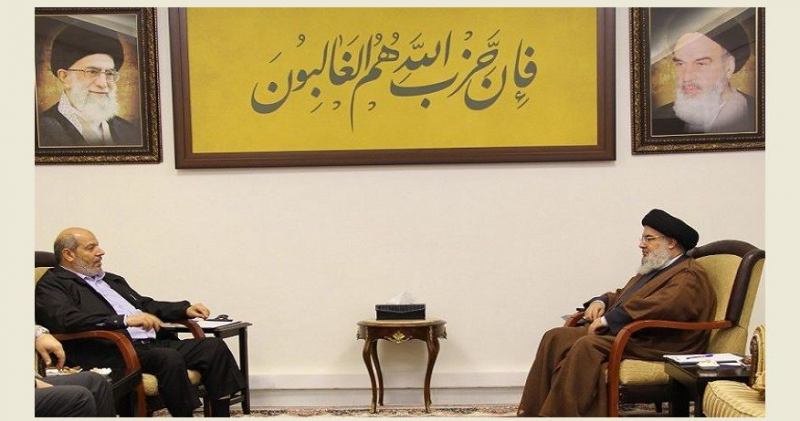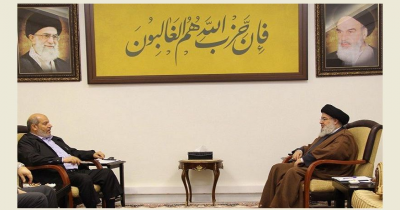Against the backdrop of confrontations in Gaza and Lebanon, and the stalled negotiations for a ceasefire, the Secretary General of Hezbollah, Hassan Nasrallah, met with a leadership delegation from Hamas led by the Deputy Head of the Movement in the Gaza Strip, Khalil Hayya. What are the implications of this meeting between the leaderships of the Lebanese and Palestinian resistances at this time?
Since the significant date of October 7, both Hezbollah and Hamas have been keen to enhance consultation and coordination between them to keep up with military and political developments in the confrontation with the Israeli enemy, as reported by "Al-Joumhouria". Following the recent round of negotiations in Cairo regarding the proposed ceasefire reaching a deadlock, Hamas decided to inform their Lebanese ally about the details of the negotiations behind the scenes and the realities of the military situation.
Khalil Hayya is known to be one of Hamas's key representatives in the Egypt negotiations, and thus possesses insights into this file and is aware of all its intricacies, which enabled him to brief Nasrallah on the complete picture of the political battle being waged in diplomatic corridors to reach an agreement that fulfills the aspirations of the Palestinians following the immense sacrifices they have made.
It has been reported that prior to the recent and public meeting between Hamas and Hezbollah, there was another undisclosed meeting that took place earlier, as part of the ongoing coordination following the Al-Aqsa Flood operation and the unprecedented wide-scale Israeli aggression that followed.
Hamas leadership sources assert that consultation with allies in the resistance axis is essential and must be adhered to, as all parties share a common struggle on various fronts. They emphasize that Hezbollah is a partner in blood, and they cannot engage in negotiations or reach an agreement without first keeping them informed of all developments and consulting with them on every situation they face, whether military or political.
Thus, it was natural to meet with Hezbollah following the recent negotiation round to discuss the state of affairs, in addition to updating them on the military and humanitarian situation in the Gaza Strip. Leadership sources highlight that there is significant appreciation from Hamas for the sacrifices made by allies in the resistance axis, and thus it is also important to consult on any new developments with Ansar Allah in Yemen and other allied forces.
Despite attempts to reach a ceasefire before the holy month of Ramadan failing, Hamas sources indicate that the possibility of reaching an agreement has not completely diminished and still exists, emphasizing their commitment to two priorities: achieving a sustainable ceasefire and the withdrawal of the occupation army from the Gaza Strip to facilitate aid access and the movement of people across the fragmented region, with Hamas showing flexibility regarding the Israeli prisoners in their possession.
Sources warn that the ceasefire proposed to them is merely a ruse through which the occupation aims to recover its prisoners and subsequently resume its aggression freely, according to "Al-Joumhouria". They assert that the Al-Qassam Brigades and other factions maintain their cohesion and can withstand for additional months, as their core remains intact and they emerge from tunnels to surprise the enemy before returning to their bases, explaining their negotiation strength, even though the occupation seeks to pressure them by starving civilians in northern Gaza.
The sources indicate that what helps Hamas to withstand this pressure is the people's support for its position, rejecting a ceasefire that lasts only a few weeks followed by a more intense war; instead, they desire a sustainable truce.




